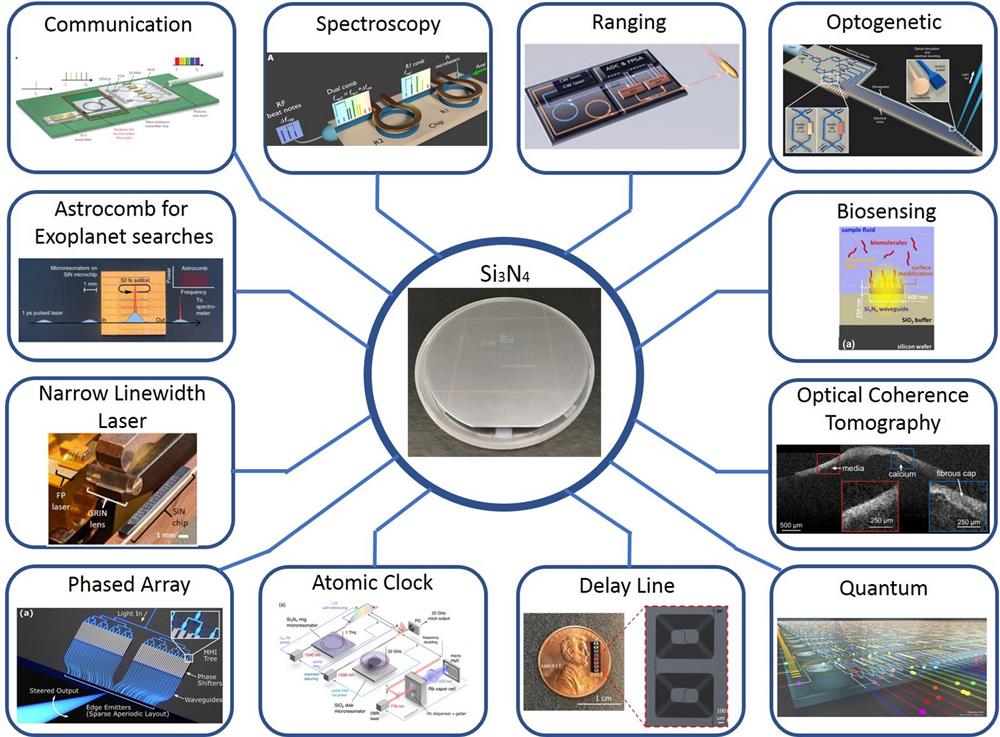
Photonics uses light rather than electrons to perform varieties of applications. Silicon photonics, in particular, has gained a lot of interest in the past few decades due to its unique ability to utilize standard complementary metal-oxide-semiconductor manufacturing processes and materials, resulting in high density, high yield, and the massive fabrication of optical devices at low cost. Although the field has its roots in the telecommunications industry, it has expanded to many new applications such as sensing, spectroscopy, nonlinear optics, quantum optics, optomechanics, and even neuroscience. Silicon nitride, one of the mature silicon family materials has been widely used in photonics research and development. It combines the beneficial properties of a wide transparency range covering visible to mid-IR, a moderately high nonlinear refractive index which is ten times higher than silica, and semiconductor mass manufacturing compatibility. Most importantly, silicon nitride can achieve ultra-low loss and high confinement simultaneously. All these beneficial properties makes silicon nitride stands out in integrated photonics platforms.